Potato Container Gardening: Unlock the secrets to bountiful harvests, even without a sprawling backyard! Have you ever dreamed of digging up your own fresh, earthy potatoes, ready to be transformed into crispy fries or creamy mashed potatoes? I know I have! But the thought of needing acres of land can be daunting. Well, what if I told you that you could grow a surprising amount of potatoes in just a single container, right on your patio or balcony?
Growing potatoes has a rich history, dating back thousands of years to the Andes Mountains of South America. These humble tubers sustained civilizations and eventually spread across the globe, becoming a staple in countless cuisines. Now, you can participate in this age-old tradition, even in the most urban settings!
In today’s fast-paced world, connecting with nature can be a challenge. Potato Container Gardening offers a simple, rewarding way to bring the garden to you. It’s perfect for apartment dwellers, busy families, or anyone looking to enjoy the satisfaction of growing their own food. Plus, it’s a fantastic way to reduce your carbon footprint and enjoy fresh, organic produce. This DIY guide will walk you through every step, from choosing the right container and soil to harvesting your delicious, homegrown potatoes. Get ready to experience the joy of digging up your own treasure trove of spuds!
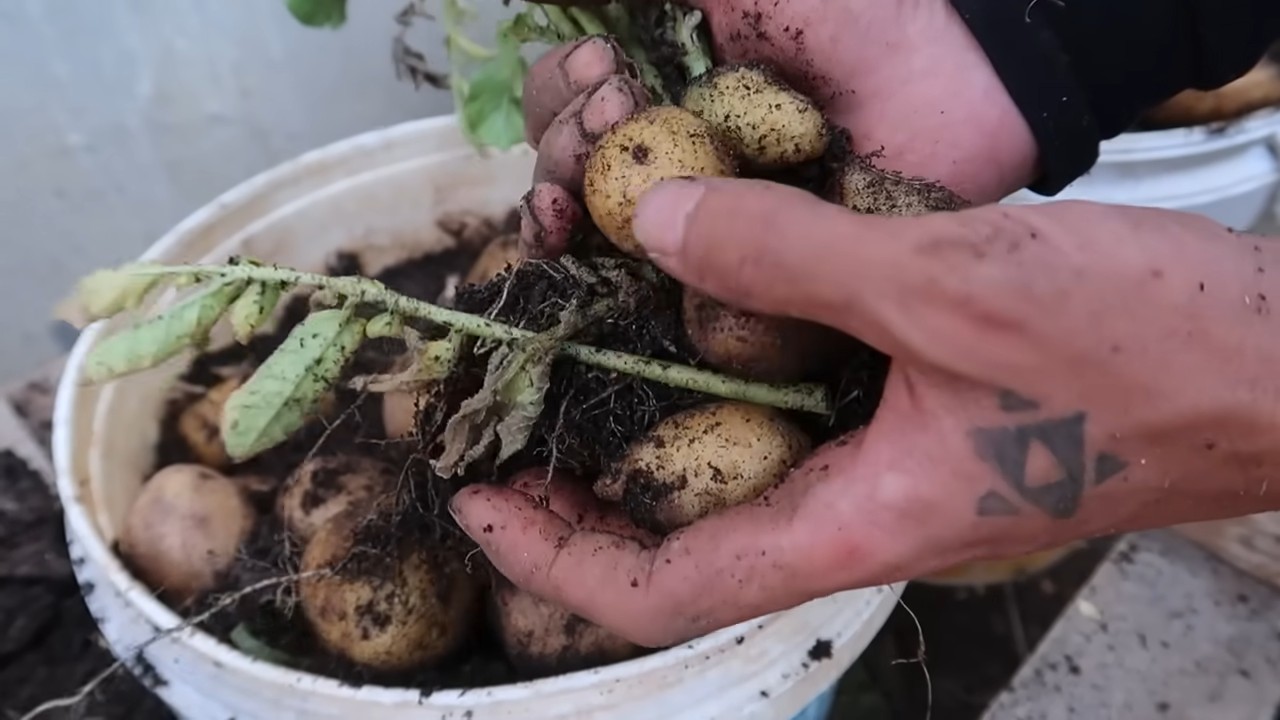
Grow Your Own Spuds: A Beginner’s Guide to Potato Container Gardening
Hey there, fellow gardening enthusiasts! Ever dreamt of harvesting your own delicious potatoes right from your patio or balcony? Well, dream no more! Potato container gardening is surprisingly easy, even for those of us who aren’t exactly blessed with a green thumb (myself included!). It’s a fantastic way to grow fresh, flavorful potatoes in a small space, and it’s incredibly rewarding to watch those little seed potatoes transform into a bountiful harvest. So, grab your gardening gloves, and let’s get started!
What You’ll Need: The Potato Container Gardening Essentials
Before we dive into the nitty-gritty, let’s gather our supplies. Here’s a checklist of everything you’ll need to embark on your potato-growing adventure:
* A Large Container: This is crucial! We’re talking about a container that’s at least 20 gallons in size. Think large plastic tubs, trash cans (new, of course!), grow bags, or even repurposed barrels. The bigger, the better, as it gives the potatoes plenty of room to grow. Make sure your container has drainage holes at the bottom.
* Seed Potatoes: These aren’t your regular grocery store potatoes. Seed potatoes are specifically grown for planting and are certified disease-free. You can find them at your local garden center or online. Choose a variety that suits your taste – Yukon Gold, Russet, Red Pontiac, or even something more exotic!
* Potting Mix: Don’t use garden soil! It’s too heavy and compacts easily, which can hinder potato growth. Opt for a lightweight, well-draining potting mix. You can also create your own mix by combining equal parts compost, peat moss (or coco coir), and perlite or vermiculite.
* Fertilizer: Potatoes are heavy feeders, so a good fertilizer is essential. Look for a balanced fertilizer with an NPK ratio of around 10-10-10 or 14-14-14. You can also use an organic fertilizer like bone meal or fish emulsion.
* Watering Can or Hose: You’ll need a way to water your potatoes regularly.
* Optional:
* Chitting Tray or Egg Carton: For sprouting your seed potatoes before planting (more on this later).
* Mulch: To help retain moisture and suppress weeds. Straw or shredded leaves work well.
Step-by-Step Guide: Planting Your Potato Paradise
Alright, let’s get our hands dirty! Here’s a detailed guide to planting your seed potatoes in containers:
1. Chitting Your Seed Potatoes (Optional but Recommended): Chitting, or pre-sprouting, your seed potatoes gives them a head start and can result in an earlier harvest. To chit your potatoes, place them in a cool, bright location (but not direct sunlight) for a few weeks. An egg carton or chitting tray works perfectly. You’ll notice small sprouts, called “eyes,” emerging from the potatoes. These are what will eventually become the potato plants.
2. Prepare Your Container: If your container doesn’t already have drainage holes, drill some in the bottom. This is super important to prevent waterlogging, which can rot your potatoes.
3. Add the Initial Layer of Potting Mix: Fill the bottom of your container with about 4-6 inches of potting mix. This will be the initial planting bed for your seed potatoes.
4. Cut Your Seed Potatoes (If Necessary): If your seed potatoes are large (bigger than an egg), you can cut them into smaller pieces, ensuring that each piece has at least one or two “eyes.” Let the cut pieces dry for a day or two to callous over. This helps prevent rot. If your seed potatoes are small, you can plant them whole.
5. Plant Your Seed Potatoes: Place the seed potato pieces (or whole potatoes) on top of the potting mix, with the “eyes” facing upwards. Space them about 8-10 inches apart. If you’re using a very large container, you can plant more than one potato.
6. Cover with Potting Mix: Cover the seed potatoes with another 4-6 inches of potting mix. Gently water the soil until it’s moist but not soggy.
7. Place in a Sunny Location: Potatoes need at least 6-8 hours of sunlight per day. Choose a sunny spot on your patio, balcony, or in your garden.
8. Water Regularly: Keep the soil consistently moist, but avoid overwatering. Check the soil moisture by sticking your finger into the soil. If the top inch or two feels dry, it’s time to water.
9. Fertilize: About two weeks after planting, start fertilizing your potatoes with a balanced fertilizer. Follow the instructions on the fertilizer package. You can fertilize every two to three weeks throughout the growing season.
“Hilling” Your Potatoes: The Secret to a Bountiful Harvest
Now, here’s where the magic happens! “Hilling” is a crucial technique for potato container gardening. As your potato plants grow, you’ll need to add more soil to the container. This encourages the plants to produce more potatoes along the stems.
1. Wait for the Shoots to Emerge: After a few weeks, you’ll see green shoots emerging from the soil.
2. Add More Potting Mix: When the shoots are about 6-8 inches tall, add another 4-6 inches of potting mix to the container, covering the stems almost up to the top leaves. This is the “hilling” process.
3. Repeat the Process: Continue to “hill” your potatoes every few weeks as the plants grow, until the container is almost full.
4. Water and Fertilize: Continue to water and fertilize your potatoes regularly throughout the growing season.
Caring for Your Potato Plants: Tips and Tricks
Growing potatoes in containers is relatively low-maintenance, but here are a few tips to ensure a successful harvest:
* Monitor for Pests and Diseases: Keep an eye out for common potato pests like aphids, potato beetles, and flea beetles. You can control these pests with insecticidal soap or neem oil. Also, watch out for diseases like early blight and late blight. Proper watering and good air circulation can help prevent these diseases.
* Water Wisely: Avoid overwatering, as this can lead to root rot. Water deeply but infrequently, allowing the soil to dry out slightly between waterings.
* Provide Support (Optional): If your potato plants get very tall and leggy, you may need to provide some support to prevent them from falling over. You can use stakes or a tomato cage.
* Mulch: Adding a layer of mulch around your potato plants can help retain moisture, suppress weeds, and regulate soil temperature.
Harvest Time: Digging Up Your Treasure
The moment we’ve all been waiting for! Harvesting your homegrown potatoes is incredibly satisfying. Here’s how to know when it’s time to dig up your treasure:
1. Check the Foliage: The foliage (the green leaves and stems) will start to turn yellow and brown and eventually die back. This is a sign that the potatoes are ready to be harvested.
2. Test Dig: You can do a test dig to check the size and maturity of the potatoes. Gently dig around the base of the plant and pull out a few potatoes. If they’re the size you want, it’s time to harvest!
3. Harvest Carefully: To harvest, gently tip the container over and carefully remove the potatoes from the soil. Be careful not to damage the potatoes with your shovel or trowel.
4. Cure Your Potatoes: After harvesting, cure your potatoes by spreading them out in a cool, dark, and well-ventilated place for a week or two. This helps to harden the skins and prevent rot.
5. Store Your Potatoes: Store your cured potatoes in a cool, dark, and dry place. They should last for several months.
Troubleshooting: Common Potato Container Gardening Problems
Even with the best planning, you might encounter a few hiccups along the way. Here are some common problems and how to address them:
* No Potatoes: This could be due to several factors, including insufficient sunlight, poor soil, lack of fertilizer, or overwatering. Make sure your potatoes are getting enough sunlight, use a good quality potting mix, fertilize regularly, and water properly.
* Small Potatoes: Small potatoes can be caused by overcrowding, lack of fertilizer, or insufficient watering. Make sure you’re planting your seed potatoes far enough apart, fertilizing regularly, and watering deeply.
* Rotting Potatoes: Rotting potatoes are usually caused by overwatering or poor drainage. Make sure your container has drainage holes and avoid overwatering.
* Pests and Diseases: As mentioned earlier, monitor your plants for pests and diseases and take action promptly.
Enjoy Your Homegrown Potatoes!
And
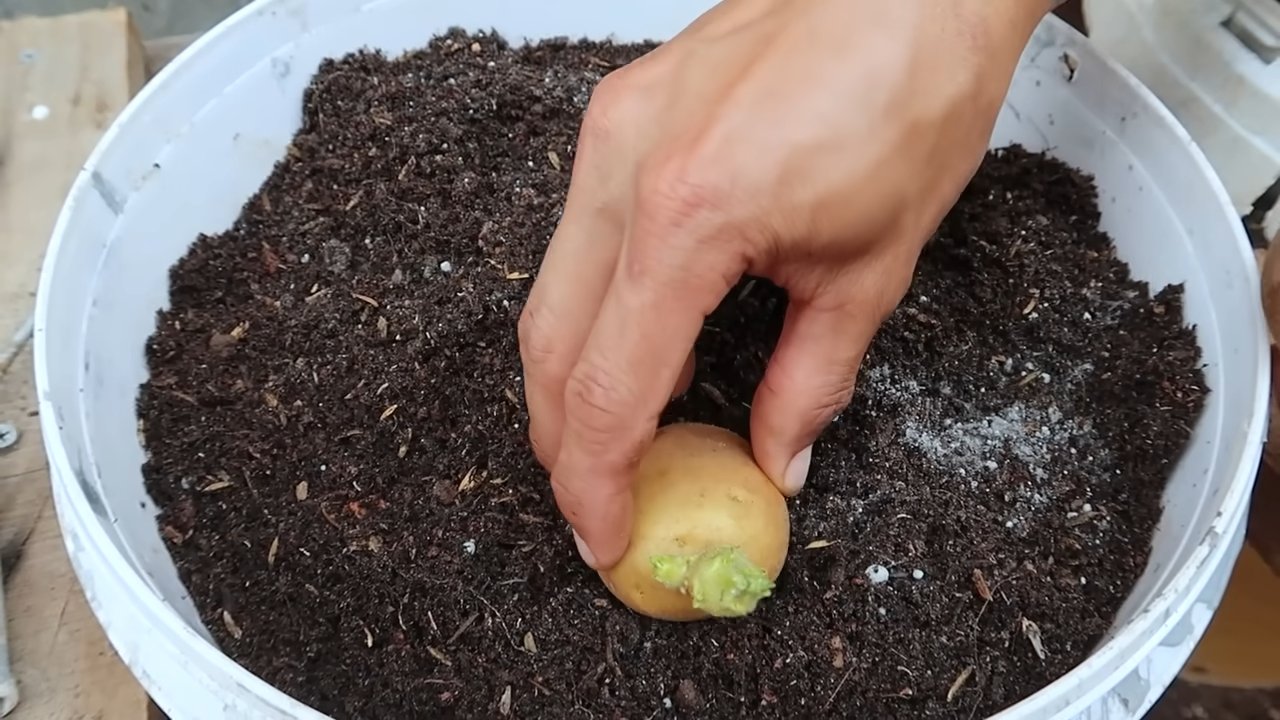
Conclusion
So, there you have it! Potato container gardening isn’t just a trend; it’s a revolution in how we think about growing our own food, especially when space is at a premium. We’ve walked through the steps, highlighted the benefits, and hopefully, inspired you to ditch the grocery store spuds (at least some of the time!) and embrace the joy of harvesting your own homegrown potatoes.
Why is this a must-try? Because it’s accessible, rewarding, and frankly, pretty darn cool. Imagine the satisfaction of digging into a container and unearthing a treasure trove of fresh, flavorful potatoes that you nurtured from start to finish. It’s a connection to nature that’s hard to beat, and it’s a fantastic way to involve kids in the gardening process, teaching them about where their food comes from.
But the beauty of potato container gardening lies in its adaptability. Feel free to experiment! Try different potato varieties – Yukon Golds for creamy mashed potatoes, Red Norlands for vibrant potato salads, or even fingerling potatoes for a gourmet touch. Don’t be afraid to play around with the container size and material. While we’ve suggested specific dimensions, you can adapt them based on your available space and resources. Consider using fabric grow bags for enhanced drainage and aeration, or repurpose old trash cans or storage bins (just be sure to drill drainage holes!).
And the soil? That’s another area ripe for experimentation. While a well-draining potting mix is essential, you can enrich it with compost, worm castings, or even aged manure for an extra boost of nutrients. Just remember to avoid using garden soil, as it can compact and hinder drainage.
Beyond the potatoes themselves, think about companion planting. Marigolds can help deter pests, while basil can enhance the flavor of your potatoes. A little creativity can go a long way in creating a thriving and productive container garden.
Most importantly, don’t be discouraged if your first attempt isn’t perfect. Gardening is a learning process, and even experienced gardeners encounter challenges. The key is to observe, adapt, and learn from your mistakes. Did your potatoes get too much sun? Move the container to a shadier spot. Did they not get enough water? Adjust your watering schedule.
We truly believe that potato container gardening is a game-changer for anyone who wants to grow their own food, regardless of their experience level or available space. It’s a fun, rewarding, and sustainable way to enjoy fresh, delicious potatoes right from your own backyard (or balcony!).
So, what are you waiting for? Grab a container, some seed potatoes, and get planting! We’re confident that you’ll be amazed by the results. And once you’ve harvested your first crop, we’d love to hear about your experience. Share your photos, tips, and stories in the comments below. Let’s build a community of potato container gardening enthusiasts and inspire others to join the fun! Let us know what worked for you, what challenges you faced, and any creative variations you tried. Together, we can unlock the full potential of this amazing gardening technique. Happy growing!
Frequently Asked Questions (FAQ)
What kind of potatoes should I use for container gardening?
The best potatoes for container gardening are typically “seed potatoes,” which are potatoes specifically grown for planting. You can find them at most garden centers or online retailers. Choose varieties that are known to be productive and well-suited for your climate. Some popular choices include Yukon Gold, Red Norland, fingerling potatoes, and Irish Cobbler. Avoid using potatoes from the grocery store, as they may have been treated to prevent sprouting.
How big of a container do I need for potato container gardening?
A good rule of thumb is to use a container that is at least 20 inches in diameter and 24 inches deep. This will provide enough space for the potato plants to develop a healthy root system and produce a decent yield. Larger containers are always better, as they allow for more root growth and better water retention. You can use plastic pots, fabric grow bags, or even repurposed containers like trash cans or storage bins, as long as they have adequate drainage holes.
What kind of soil should I use?
Use a well-draining potting mix specifically formulated for container gardening. Avoid using garden soil, as it can compact and hinder drainage, which can lead to root rot. You can amend the potting mix with compost, worm castings, or aged manure to provide extra nutrients. A slightly acidic soil pH (around 6.0 to 6.5) is ideal for potatoes.
How often should I water my potato plants?
Water your potato plants regularly, especially during hot and dry weather. The soil should be consistently moist but not waterlogged. Check the soil moisture by sticking your finger about an inch deep into the soil. If it feels dry, it’s time to water. Avoid overwatering, as this can lead to root rot.
How much sunlight do potato plants need?
Potato plants need at least six hours of sunlight per day to thrive. Choose a location that receives full sun for the best results. If you live in a particularly hot climate, you may want to provide some afternoon shade to prevent the plants from overheating.
How do I “hill” my potato plants in a container?
“Hilling” is the process of adding more soil to the container as the potato plants grow. This encourages the plants to produce more potatoes along the buried stems. When the plants are about 6 inches tall, add a few inches of soil to the container, covering the lower part of the stems. Repeat this process every few weeks as the plants grow, until the container is almost full.
When will my potatoes be ready to harvest?
The time it takes for potatoes to mature depends on the variety and growing conditions. Generally, you can start harvesting “new potatoes” (small, immature potatoes) about 7-8 weeks after planting. For mature potatoes, wait until the foliage starts to turn yellow and die back, which usually takes around 10-12 weeks. To harvest, simply tip the container over and carefully dig through the soil to find the potatoes.
What are some common pests and diseases that affect potato plants?
Some common pests that can affect potato plants include aphids, potato beetles, and flea beetles. Diseases include early blight, late blight, and potato scab. You can prevent many of these problems by using disease-resistant potato varieties, practicing good sanitation, and avoiding overwatering. If you encounter pests or diseases, you can use organic pest control methods or fungicides as needed.
Can I grow potatoes in containers indoors?
While it’s possible to grow potatoes indoors, it can be challenging to provide them with the amount of sunlight they need. If you want to try growing potatoes indoors, choose a sunny location near a south-facing window or use grow lights to supplement the natural light.
What can I do with my potato harvest?
The possibilities are endless! You can use your homegrown potatoes in all your favorite potato dishes, such as mashed potatoes, roasted potatoes, potato salad, and French fries. You can also store them for later use by curing them in a cool, dark, and dry place. Enjoy the fruits (or rather, tubers) of your labor!

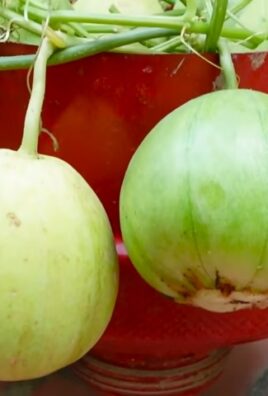
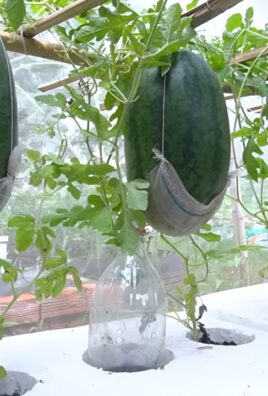
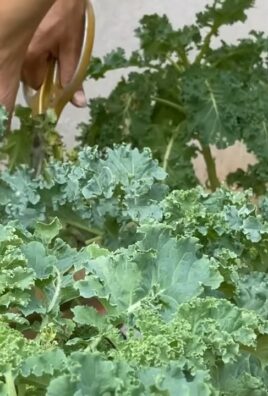
Leave a Comment